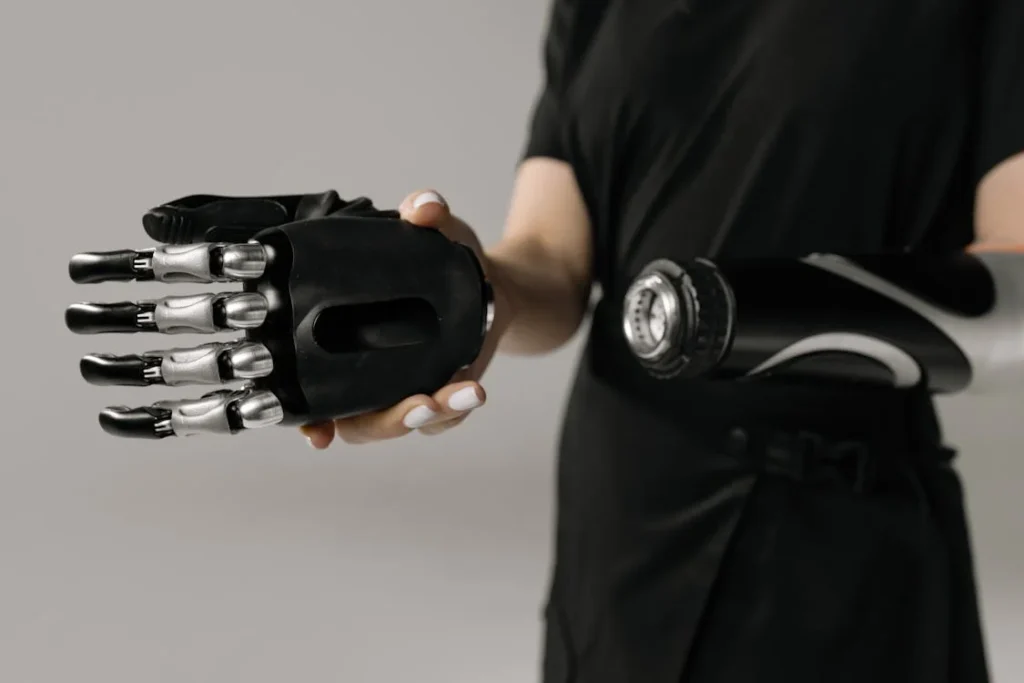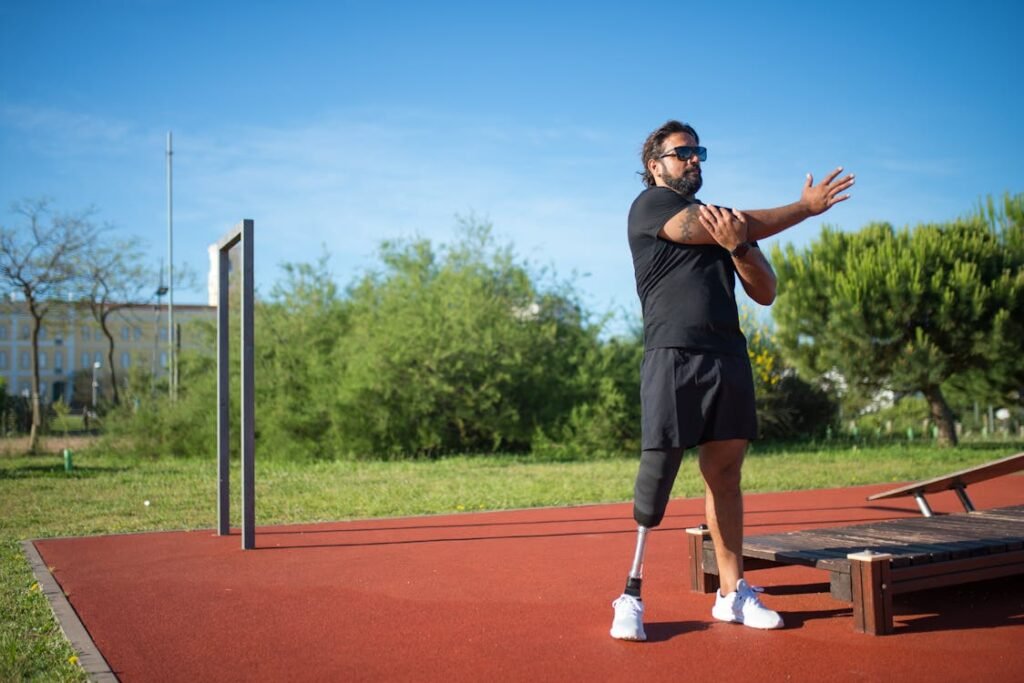Prosthetic limbs restore mobility, independence, and confidence to people who have lost a limb due to accidents, medical conditions, or birth defects. However, for many in India, the cost of prosthetic limbs remains a major challenge. While advancements in technology have made prosthetics more functional and comfortable, affordability continues to be a pressing issue.
One of the key factors affecting prosthetic limb prices in India is the Goods and Services Tax (GST). Introduced in 2017, GST replaced multiple indirect taxes with a single tax structure. While this simplified taxation in many sectors, it also led to price changes for essential medical devices, including prosthetic limbs.
The way GST applies to prosthetics has raised important questions. Should artificial limbs be taxed like consumer goods, or should they be treated as essential medical equipment with lower tax rates? The impact of GST on prosthetics affects not just patients but also manufacturers, suppliers, and healthcare providers.

Understanding GST and Its Application to Prosthetic Limbs
GST, or the Goods and Services Tax, is a unified tax structure introduced in India in 2017. It replaced multiple indirect taxes such as excise duty, VAT, and service tax with a single system to simplify tax collection and compliance.
While GST streamlined taxation across industries, its impact on medical devices, including prosthetic limbs, has been mixed.
GST Rates on Medical Devices and Prosthetics
Under the GST system, goods and services are classified into different tax slabs—0%, 5%, 12%, 18%, and 28%.
Essential healthcare products such as life-saving drugs and certain medical devices are placed in the lower tax brackets, ensuring they remain affordable for the masses. However, prosthetic limbs do not fall into the zero-tax category like some other essential medical products.
Currently, prosthetic limbs and orthopedic appliances, including artificial limbs, wheelchairs, and crutches, attract a 5% GST rate.
Before GST was introduced, many of these devices were either exempt from taxation or subject to lower state-level taxes, meaning the final cost was more affordable for users.
The introduction of a fixed 5% GST rate led to a price increase for many prosthetic devices, making them slightly more expensive than before.
Why a 5% GST Rate Matters for Prosthetic Users
At first glance, a 5% tax rate may not seem excessive, especially compared to other goods taxed at higher slabs. However, for individuals needing prosthetic limbs, even a small increase in price can make a significant difference.
Prosthetic devices, particularly advanced bionic limbs like Grippy™ by Robobionics, already involve high manufacturing costs due to the use of precision engineering, sensors, and lightweight materials.
Adding GST on top of production and import costs results in a higher final price for users.
For example, a basic below-the-knee prosthetic limb that earlier cost ₹50,000 may now cost ₹52,500 due to the 5% GST.
While this increase may not seem drastic, higher-end prosthetic limbs that cost ₹3-5 lakh see an increase of ₹15,000 to ₹25,000, making them less accessible for middle- and lower-income individuals.
The impact is even more pronounced for individuals who require customized prosthetics, as these involve additional fitting, testing, and adjustments that further increase the cost.
Unlike mass-produced medical devices, prosthetic limbs are often tailored to individual needs, making every additional expense more significant for the end-user.
The Burden on Manufacturers and Suppliers
Beyond users, the GST impact extends to prosthetic manufacturers, suppliers, and healthcare providers.
Domestic prosthetic manufacturers face higher input costs because raw materials such as carbon fiber, medical-grade silicone, and electronic components attract separate GST rates, usually in the 12% to 18% range.
Since businesses can only claim input tax credits based on the final GST paid on their product (which is 5%), many manufacturers end up absorbing additional costs, squeezing profit margins and making local production less attractive.
Importers also feel the pressure. Many advanced prosthetic components are imported from countries like the US, Germany, and Japan, where high-end prosthetic technology is developed.
These imports attract custom duties along with GST, further increasing prices for Indian users. Since India is still developing its own high-tech prosthetic industry, reliance on imports is high, and any added tax burden directly impacts consumers.

How GST Affects Affordability and Accessibility of Prosthetic Limbs
GST has directly influenced the affordability of prosthetic limbs in India. While the 5% GST rate may seem low, it has created financial hurdles for prosthetic users, hospitals, NGOs, and rehabilitation centers.
For individuals who rely on prosthetic limbs for daily activities and employment, even a small price increase can make a significant difference in their ability to access high-quality prosthetic solutions.
Increased Costs for Patients and Rehabilitation Centers
For most prosthetic users, affordability is already a challenge. Many individuals who need artificial limbs come from low-income backgrounds, rural areas, or work in physically demanding jobs where an injury or limb loss can lead to severe financial hardship.
Prosthetic devices are not just one-time purchases; they often require replacements, repairs, and adjustments over time. The added cost from GST means that patients must either pay more out of pocket or delay getting a prosthetic limb, affecting their mobility and quality of life.
Rehabilitation centers and NGOs that provide free or subsidized prosthetics to those in need have also felt the impact. These organizations rely on donations, government grants, and CSR funding to distribute prosthetic limbs.
When prices increase due to GST, it reduces the number of people they can help. Some NGOs have had to scale back their programs, meaning fewer individuals receive prosthetic limbs, and waiting periods for fittings have increased.
The Impact on Insurance Coverage and Government Assistance
Although some insurance companies in India offer partial coverage for prosthetic limbs, most policies do not fully cover the cost of advanced prosthetic devices.
GST adds another layer of financial burden for insurance providers, who may limit the reimbursement amount based on the pre-GST price of prosthetics. This results in policyholders paying a higher percentage of the total cost out of pocket.
Similarly, government schemes like Ayushman Bharat do provide financial aid for medical treatment, but coverage for prosthetic devices remains limited.
The additional GST cost is rarely accounted for in existing reimbursement policies, leaving many prosthetic users with unexpected expenses when purchasing a limb.
The Case for GST Reduction or Exemption on Prosthetic Limbs
Given the essential nature of prosthetic limbs, there is a strong argument for reducing or exempting them from GST.
Several disability rights activists, healthcare professionals, and prosthetic manufacturers have petitioned the government to reclassify prosthetic devices under the zero-tax category, similar to life-saving drugs.
Countries like the United Kingdom and Canada have zero-rated or heavily subsidized prosthetic limbs, recognizing them as medical necessities rather than taxable goods.
If India follows this approach, it would make prosthetic devices more affordable for thousands of individuals who rely on them for independence and mobility.
A GST exemption would also encourage domestic manufacturing, as manufacturers would no longer have to absorb additional tax burdens on raw materials.
This could lead to more innovation in the Indian prosthetic industry, reducing dependence on expensive imports and making advanced prosthetics more accessible.

Government Policies and Industry Reactions to GST on Prosthetic Limbs
The introduction of GST on prosthetic limbs has sparked discussions among policymakers, healthcare professionals, and disability rights advocates.
While the Indian government has taken steps to rationalize taxes on medical devices, there is still no specific exemption for prosthetic limbs.
This has led to growing concerns within the disability community and among prosthetic manufacturers about the long-term impact of GST on affordability and accessibility.
Existing Government Policies on Prosthetic Pricing
India has various health and disability welfare schemes, but none specifically address the GST burden on prosthetic limbs.
Programs like Ayushman Bharat, Rashtriya Vayoshri Yojana, and the Assistance to Disabled Persons (ADIP) Scheme provide financial aid for assistive devices, but they do not absorb the additional GST costs, meaning beneficiaries must still cover the tax portion themselves.
The National Policy for Persons with Disabilities, introduced in 2006, emphasizes equal opportunities and access to assistive technology, but it does not address tax reforms that could make prosthetic limbs more affordable.
While the government has lowered GST on essential medicines and some medical devices, prosthetic limbs remain taxed at 5%, leading many to call for a full exemption or further tax reductions.
Advocacy Efforts and Industry Reactions
Disability rights organizations and prosthetic manufacturers have been actively lobbying for lower GST rates or complete exemptions on prosthetic limbs.
Several petitions have been submitted to the Ministry of Finance and the Goods and Services Tax Council, urging them to recognize prosthetics as essential medical equipment rather than taxable consumer products.
Manufacturers argue that higher costs due to GST discourage innovation in India’s prosthetic industry. Many smaller companies struggle to compete with international brands, as they must pay higher taxes on raw materials while operating on tight profit margins.
If GST were reduced or removed, manufacturers could invest more in research and development, leading to the creation of affordable, high-quality prosthetic solutions for Indian users.
Some states have also raised concerns about the impact of GST on accessibility. Tamil Nadu, Maharashtra, and Karnataka, which have large numbers of people using prosthetic limbs, have pushed for state-level subsidies to offset GST costs.
However, since GST is a centralized tax, individual states have limited power to alter the rates.
International Comparisons: How Other Countries Handle Prosthetic Taxes
Looking at global best practices, several countries have taken progressive steps to ensure prosthetic limbs remain affordable.
The United Kingdom and Canada have zero-rated taxes on prosthetics, meaning they are exempt from VAT or GST-like taxes.
In the United States, medical prosthetic devices are also exempt from sales tax in most states, recognizing them as a medical necessity rather than a taxable product.
India’s current approach, while better than countries that impose higher tax rates, still places financial strain on prosthetic users, especially in lower-income groups.
By following global models, India could make prosthetic limbs more affordable and accessible, improving mobility and independence for thousands of people.

The Future of GST on Prosthetic Limbs in India
With ongoing discussions about tax reforms and accessibility, the future of GST on prosthetic limbs remains uncertain. However, there is growing momentum towards reducing or eliminating GST on essential medical devices, including prosthetic limbs.
As more stakeholders—government officials, disability rights activists, manufacturers, and healthcare providers—push for reform, India may soon see policy changes that make prosthetics more affordable for those who need them.
Potential GST Reforms and Policy Changes
One of the most discussed proposals is the reclassification of prosthetic limbs under the zero-tax category.
If approved, this would mean no GST on prosthetics, significantly lowering costs for users.
This proposal is supported by various disability advocacy groups, who argue that prosthetics are not luxury items but medical necessities, just like wheelchairs, hearing aids, and other assistive devices.
Another potential reform is the introduction of tax credits or subsidies for prosthetic purchases. If the government provides financial rebates for GST paid on prosthetic limbs, it would effectively lower the cost for users without requiring a complete tax exemption.
This approach has been successfully implemented in other sectors where tax exemptions are not feasible but affordability is a concern.
The government may also explore tiered taxation, where basic prosthetic limbs remain at 5% GST but advanced, high-tech prosthetics like bionic limbs receive a lower tax rate or exemption.
This could benefit users who require more functional prosthetic devices, ensuring they are not burdened by high costs due to advanced technology.
The Role of Public Awareness and Advocacy
For GST reforms to become a reality, public awareness and advocacy play a crucial role. Many individuals who rely on prosthetic limbs may not be aware of how GST affects pricing, making it important for advocacy groups and manufacturers to educate users about their rights.
Petitions, public campaigns, and discussions with policymakers can push for changes in the GST structure, just as previous healthcare reforms have led to lower taxes on essential medicines and medical treatments.
By bringing together prosthetic users, NGOs, and medical professionals, the demand for tax reductions can become a national conversation, increasing the likelihood of change.
The Role of Domestic Prosthetic Manufacturing
Another key factor in reducing prosthetic costs is strengthening domestic manufacturing.
Currently, India imports a large percentage of prosthetic components from countries like the US, Germany, and Japan, leading to higher costs due to import duties and GST on raw materials.
If India invests in local production and research, it can lower costs while maintaining high-quality prosthetic technology.
Companies like Robobionics are working towards this goal by developing affordable, high-tech prosthetic solutions like Grippy™, ensuring that users get world-class functionality at lower costs.
With government support for domestic innovation, reduced taxation, and better insurance coverage, India can create a self-sufficient ecosystem where prosthetic limbs are accessible to all, regardless of financial status.

How GST Affects Different Types of Prosthetic Users
The impact of GST on prosthetic limb prices is not uniform across all users. Different categories of people, including workers, athletes, senior citizens, and children, face unique challenges due to increased costs and limited affordability.
Understanding how GST affects various user groups can help in advocating for better policies and targeted financial support.
Industrial and Workplace Accident Survivors
Workers in industries such as construction, mining, manufacturing, and logistics are at a higher risk of workplace injuries leading to amputations.
Many of these workers come from low-income backgrounds and rely on Workmen’s Compensation or Employer Insurance to cover medical expenses, including prosthetic limbs.
However, many insurance policies do not fully cover prosthetic costs, and GST increases the financial burden.
For a worker earning ₹15,000 per month, the 5% GST on a ₹2 lakh prosthetic limb adds ₹10,000, which can be several months’ worth of wages. As a result, some workers settle for lower-quality prosthetic limbs or delay getting fitted, affecting their ability to return to work.
For this group, government-backed subsidies or GST exemptions could make a huge difference, ensuring that accident survivors receive prosthetic limbs without financial hardship.
Athletes and Para-Sport Players
For amputee athletes, prosthetic limbs are not just about mobility but performance and competition.
Running blades, bionic limbs, and sport-specific prosthetic devices require high-end materials, advanced engineering, and custom fittings, making them significantly more expensive than regular prosthetics.
A high-performance running blade can cost anywhere between ₹3 lakh and ₹10 lakh, meaning GST adds thousands of rupees to the final price.
Unlike regular users, athletes require frequent upgrades and multiple prosthetic devices for different activities, further increasing costs.
Many para-athletes rely on sponsorships or government grants, but not all receive financial aid, leaving them struggling to afford the right equipment.
A zero-GST policy on sports prosthetics could make competitive sports more accessible for para-athletes and encourage more participation in international events like the Paralympics.
Senior Citizens and Retired Individuals
Elderly individuals who require prosthetic limbs due to diabetes, vascular diseases, or age-related conditions often live on fixed pensions or savings.
Unlike younger users who may be able to return to work and earn an income, senior citizens do not always have the financial flexibility to afford prosthetic limbs.
For a retired person needing a ₹1.5 lakh prosthetic leg, the additional ₹7,500 GST can be a significant expense. Since many older individuals also have other medical costs such as medications, physiotherapy, and home modifications, every added cost matters.
A GST subsidy or exemption for senior citizens could ease the financial burden and ensure that elderly individuals continue to live independently with the right prosthetic support.
Children and Young Amputees
Children who require prosthetic limbs face a unique challenge—they outgrow their prosthetics quickly.
Unlike adults who may use the same prosthetic limb for 5 to 10 years, children need new fittings every 1 to 2 years to accommodate growth. This means families must repeatedly bear the cost of new prosthetics, including GST, throughout childhood.
For a child needing a ₹1 lakh prosthetic limb every two years, GST adds ₹5,000 to each replacement. Over a 10-year period, a family may spend ₹50,000 just in GST, in addition to the actual cost of the prosthetic.
Several countries, including Germany and Australia, provide free or subsidized prosthetic limbs for children to ensure that growing kids are not deprived of mobility due to financial limitations.
If India introduces a GST exemption or special subsidies for children, it would help reduce the financial strain on families and ensure that young amputees have continuous access to the best possible prosthetic solutions.

The Economic Impact of GST on the Prosthetics Industry
The GST policy not only affects prosthetic users but also has far-reaching consequences for the Indian prosthetics industry, including manufacturers, importers, suppliers, and rehabilitation centers.
While the tax was meant to simplify business operations, it has introduced new financial burdens and operational challenges that have influenced the pricing, availability, and innovation of prosthetic limbs in India.
Rising Costs for Domestic Prosthetic Manufacturers
India has a growing number of domestic prosthetic manufacturers aiming to provide affordable, high-quality artificial limbs.
However, the input costs for raw materials used in prosthetics are taxed at higher GST rates, usually in the 12% to 18% range.
Materials such as medical-grade silicone, lightweight carbon fiber, high-strength plastics, and electronic sensors used in bionic limbs like Grippy™ fall into higher tax categories, leading to an increase in overall manufacturing costs.
Since the final GST on prosthetic limbs is fixed at 5%, manufacturers cannot fully claim input tax credits for the taxes they pay on raw materials.
This means companies must either absorb the cost, reducing profit margins, or pass the cost onto consumers, making prosthetics more expensive.
The result is less investment in research and development, limiting the growth of affordable, high-tech prosthetic solutions within India.
If prosthetic components were taxed at the same 5% rate as the final product, manufacturers could claim full tax credits, reducing overall costs and making domestically produced prosthetics more competitive against imports.
Challenges for Importers and International Prosthetic Brands
India still depends on imported prosthetic components, particularly for high-end bionic limbs, microprocessor-controlled knees, and advanced prosthetic hands.
These imports attract custom duties in addition to GST, making imported prosthetics significantly more expensive than their domestic counterparts.
For example, a microprocessor-controlled knee joint imported from Germany or the US may cost around ₹5 lakh before taxes. When custom duties and 5% GST are added, the final cost may rise to ₹6 lakh or more, making such advanced prosthetics unaffordable for many users in India.
Unlike countries such as Japan, the UK, and Canada, where imported medical devices often receive tax exemptions, India still imposes high duties and taxes on imported prosthetic solutions.
A reduction in import duties for prosthetic components could make advanced mobility solutions more accessible for Indian users while also encouraging technology transfer and local production.
The Effect on Prosthetic Clinics and Rehabilitation Centers
Prosthetic clinics and rehabilitation centers serve as the bridge between manufacturers and users, ensuring proper fitting, training, and aftercare for prosthetic users.
These centers often import specialized prosthetic parts, train professionals, and offer post-prosthetic rehabilitation services, all of which involve additional operational costs.
GST on prosthetic services and fittings further increases treatment costs for patients. While the prosthetic limb itself is taxed at 5%, rehabilitation services and advanced fittings may be classified under standard service tax rates, increasing the total expense.
This means that while a prosthetic limb is taxed at 5%, the therapy and rehabilitation needed to use it properly may attract an 18% GST, making the overall cost of treatment significantly higher.
For a person requiring intensive rehabilitation after amputation, this added GST burden can make recovery financially draining, reducing their ability to adjust to prosthetic usage effectively.
If rehabilitation services were given lower GST rates, more amputees could access necessary post-prosthetic therapy, leading to better long-term outcomes and functionality.
The Need for Tax Incentives and Policy Adjustments
To encourage growth in the prosthetics industry, the government could introduce tax incentives for prosthetic manufacturers and importers, such as:
- Lowering GST on raw materials used in prosthetic manufacturing.
- Reducing import duties for essential prosthetic components.
- Introducing GST exemptions or subsidies for rehabilitation services to lower the overall cost of prosthetic care.
By taking these steps, India could strengthen its domestic prosthetic industry, improve affordability, and enhance accessibility for thousands of people who rely on artificial limbs to regain their mobility.
Conclusion
The impact of GST on prosthetic limb prices in India is undeniable. While a 5% GST rate may seem low, it adds financial strain on prosthetic users, manufacturers, and rehabilitation centers. The tax burden increases prosthetic costs, making advanced solutions less accessible for those who need them most, including workers, athletes, senior citizens, and children.
To make prosthetics more affordable, India must consider GST exemptions or reductions, especially for raw materials, rehabilitation services, and imported components. Countries like Canada and the UK have removed taxes on prosthetic limbs, ensuring accessibility for all. If India follows suit, it could improve affordability, encourage local manufacturing, and provide life-changing prosthetic solutions to thousands of users.
At Robobionics, we believe that financial barriers should not limit mobility. If you’re looking for an affordable, high-quality prosthetic solution, contact us today and explore how Grippy™ can help you regain independence!




Pingback: The Top Rated Prosthetic Companies for Your Needs – Prosthetics Blog